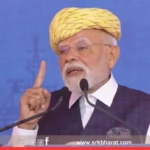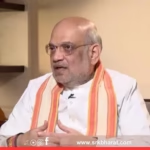In a politically charged atmosphere ahead of the Bihar Assembly elections, Chief Minister Nitish Kumar has unveiled a slew of welfare schemes aimed at various sections of society, triggering a sharp response from the opposition. The short headline, “Nitish government announces series of schemes ahead of polls; opposition claims them ‘copy’,” has become the focal point of debate across political and media platforms.
The announcements, made in Patna on September 21, 2025, include financial allowances, free electricity, increased pensions, and support for marginalized communities. While the ruling NDA coalition hails these schemes as a continuation of Nitish Kumar’s development agenda, opposition parties—particularly the Rashtriya Janata Dal (RJD)—have dismissed them as “copycat politics,” accusing the government of replicating promises made by the INDIA bloc.
Key Schemes Announced by Nitish Government
The new welfare measures span education, employment, social security, and infrastructure. Below is a breakdown of the major schemes:
| Scheme Name | Beneficiary Group | Benefit Details |
|---|---|---|
| Free Electricity Scheme | General consumers | 125 units of electricity free per month |
| Vikas Mitra Digital Empowerment | SC/ST outreach workers | ₹25,000 one-time allowance for tablets |
| Shiksha Sevak Smartphone Grant | Minority and EBC education volunteers | ₹10,000 for smartphone purchase |
| Unemployment Allowance | Youth (graduates & Class 12 pass) | ₹1,000/month for 2 years |
| Mukhyamantri Mahila Rojgar Yojana | Women entrepreneurs | ₹10,000 initial + ₹2 lakh after business assessment |
| Construction Worker Clothing Allowance | Registered laborers | ₹5,000 per worker |
| Pension Enhancement | Senior citizens, widows, disabled persons | ₹700 increase; total ₹1,100/month |
| Honorarium Hike | Jeevika, Anganwadi, ASHA workers | Revised monthly payments |
These schemes are expected to impact over 1.5 crore citizens across Bihar, with a special focus on rural and marginalized populations.
Opposition’s Allegations: “Copycat Politics”
The opposition, led by RJD spokesperson Mrityunjay Tiwary, has accused the NDA government of lifting ideas from the INDIA bloc’s manifesto. “After 20 years in power, all Nitish Kumar can offer is a diluted version of our promises. This is not governance—it’s mimicry,” Tiwary said.
Among the INDIA bloc’s proposals was a promise of 200 units of free electricity. Nitish Kumar’s counter-offer of 125 units, critics argue, is a strategic attempt to neutralize the opposition’s appeal while avoiding a complete reversal of his earlier stance against freebies.
| Opposition Claim | NDA Response | Public Reaction Summary |
|---|---|---|
| Schemes are copied from INDIA bloc | Continuation of development agenda | Mixed—some see benefit, others question timing |
| Free electricity is a diluted promise | Pragmatic and fiscally responsible | Urban voters welcome relief; rural areas skeptical |
| Unemployment allowance is inadequate | First step toward youth empowerment | Youth groups demand job creation over stipends |
Political Timing and Strategic Implications
The timing of these announcements—just weeks before the election code of conduct is expected to kick in—has raised eyebrows. Political analysts suggest that the schemes are designed to consolidate support among key voter blocs, including women, youth, SC/ST communities, and informal workers.
Dr. Ramesh Prasad, a political scientist at Patna University, noted, “This is classic pre-election welfare politics. The schemes are well-targeted, but the opposition’s claim of duplication cannot be dismissed outright.”
Comparative Analysis of Welfare Promises
| Welfare Category | INDIA Bloc Proposal | NDA Government Announcement | Difference/Overlap |
|---|---|---|---|
| Electricity Subsidy | 200 units free | 125 units free | Partial overlap |
| Youth Support | Job guarantee schemes | ₹1,000/month unemployment allowance | Different approach |
| Women Empowerment | Skill training and microfinance | ₹10,000 + ₹2 lakh for entrepreneurs | Similar intent, different execution |
| Pension Schemes | Universal pension model | ₹1,100/month for existing beneficiaries | Incremental improvement |
| Education Outreach | Digital classrooms and devices | Smartphone/tablet grants for volunteers | Targeted support |
Ground-Level Impact and Beneficiary Sentiment
Initial reactions from beneficiaries have been cautiously optimistic. Vikas Mitras in rural districts expressed relief at the tablet allowance, which they say will help them document and disseminate government schemes more efficiently. Shiksha Sevaks welcomed the smartphone grant, citing improved communication with schools and parents.
However, youth groups have voiced concerns over the unemployment allowance, calling it a “band-aid solution” to a deeper crisis of joblessness. “We need jobs, not stipends,” said Ravi Kumar, a graduate from Gaya.
Women entrepreneurs under the Mahila Rojgar Yojana have shown enthusiasm, especially for the ₹2 lakh second installment, which is contingent on business performance. Many see it as a genuine opportunity to scale their ventures.
Administrative Preparedness and Budget Allocation
The Bihar government has earmarked ₹4,200 crore for the implementation of these schemes in the first phase. A dedicated task force has been set up to monitor disbursement, beneficiary verification, and grievance redressal.
| Implementation Metric | Target Value | Current Status |
|---|---|---|
| Budget Allocation | ₹4,200 crore | Approved by Finance Department |
| Beneficiary Identification | 1.5 crore citizens | 80% completed |
| Digital Infrastructure | Tablets, smartphones, online portals | Procurement underway |
| Disbursement Timeline | October–December 2025 | Phase-wise rollout planned |
Political Reactions Across Party Lines
While the RJD has been vocal in its criticism, other parties have taken a more nuanced stance. The Congress has called for transparency in implementation, while the CPI(ML) has demanded expansion of the schemes to include landless laborers and migrant workers.
JD(U) leaders have defended the announcements, asserting that Nitish Kumar’s track record in governance justifies the new initiatives. “These are not election gimmicks. They are part of our long-term vision for Bihar,” said Sanjay Jha, JD(U) spokesperson.
Election Forecast and Voter Sentiment
With the polls approaching, the impact of these schemes on voter behavior remains uncertain. While some analysts predict a boost for the NDA in rural areas, others caution that the opposition’s narrative of “copycat politics” may resonate with urban and educated voters.
| Voter Segment | Likely Impact of Schemes | Opposition Influence |
|---|---|---|
| Rural SC/ST Communities | Positive due to Vikas Mitra support | Moderate |
| Youth (18–30) | Mixed—allowance welcomed but jobs needed | High dissatisfaction |
| Women Entrepreneurs | Strong support for financial aid | Low opposition traction |
| Construction Workers | Clothing allowance appreciated | Neutral |
| Pension Beneficiaries | Increment welcomed | Low opposition impact |
Conclusion
The Nitish government’s announcement of multiple welfare schemes ahead of the Bihar Assembly elections has stirred both hope and controversy. While the initiatives promise tangible benefits to millions, the opposition’s claim that they are mere replicas of INDIA bloc proposals has added a layer of political tension.
As Bihar heads into a crucial electoral phase, the real test will lie in the implementation of these schemes and their resonance with the electorate. Whether voters see them as genuine efforts or strategic maneuvers remains to be seen.
Disclaimer: This article is based on publicly available information and political statements. It does not represent any endorsement or official position. Readers are advised to consult government notifications and verified sources for detailed updates.











